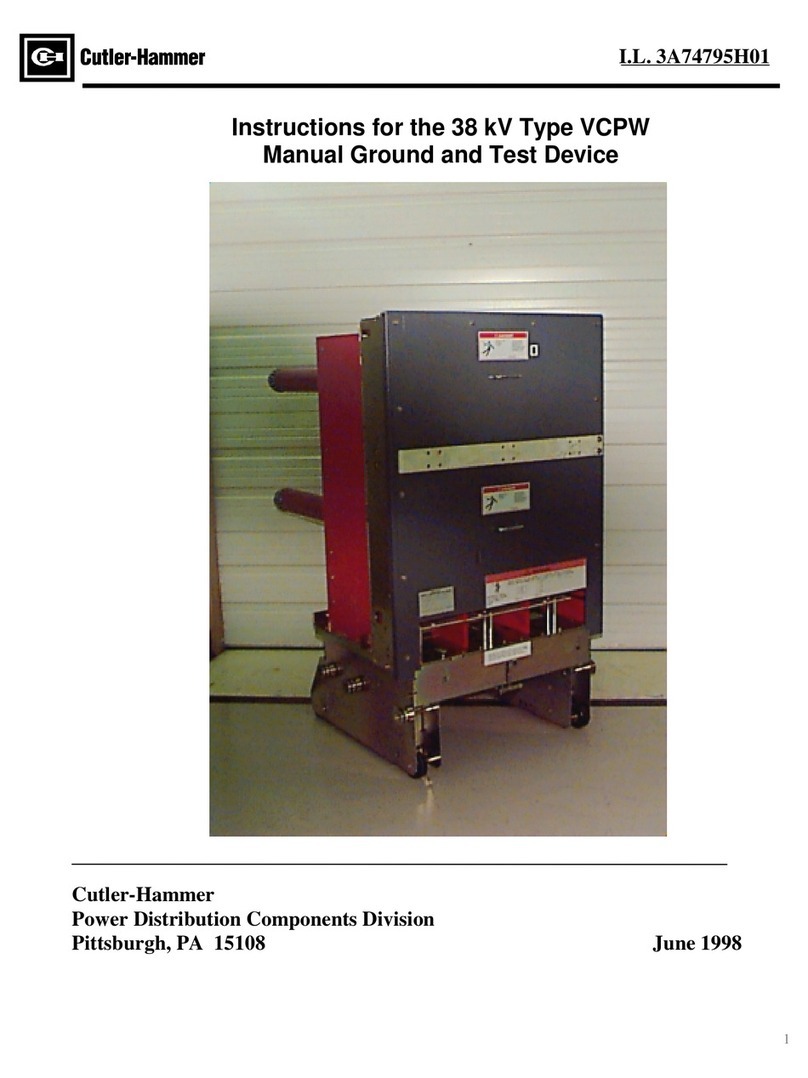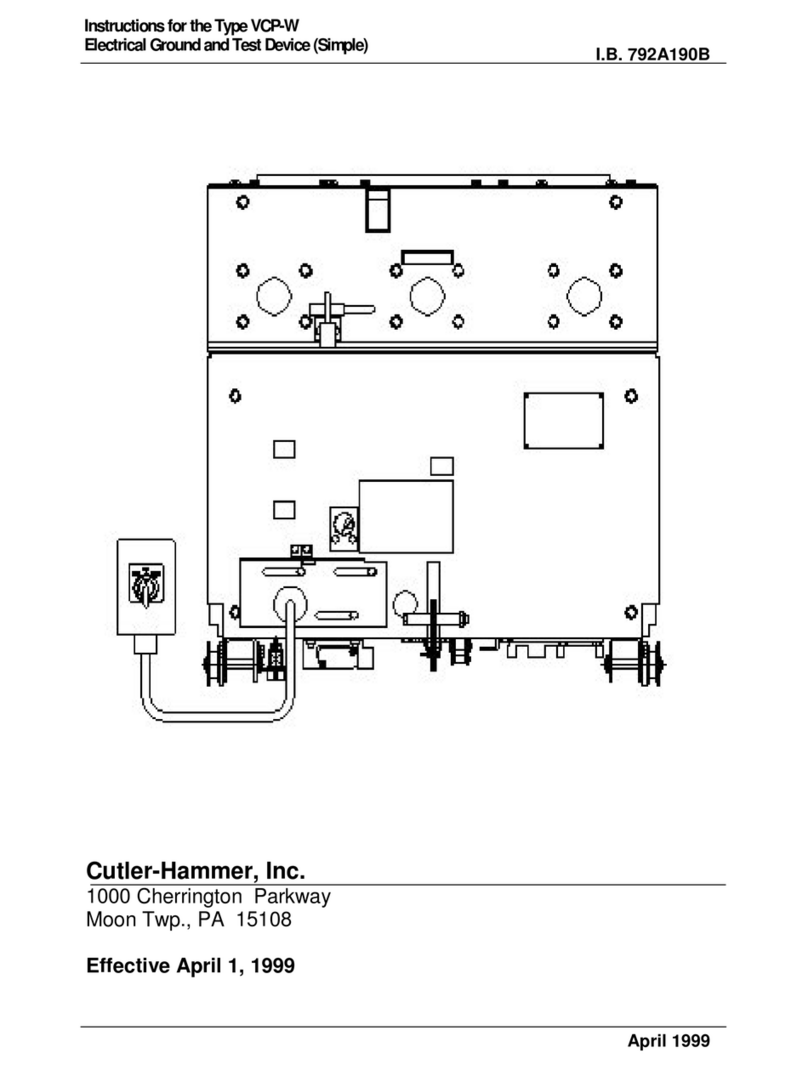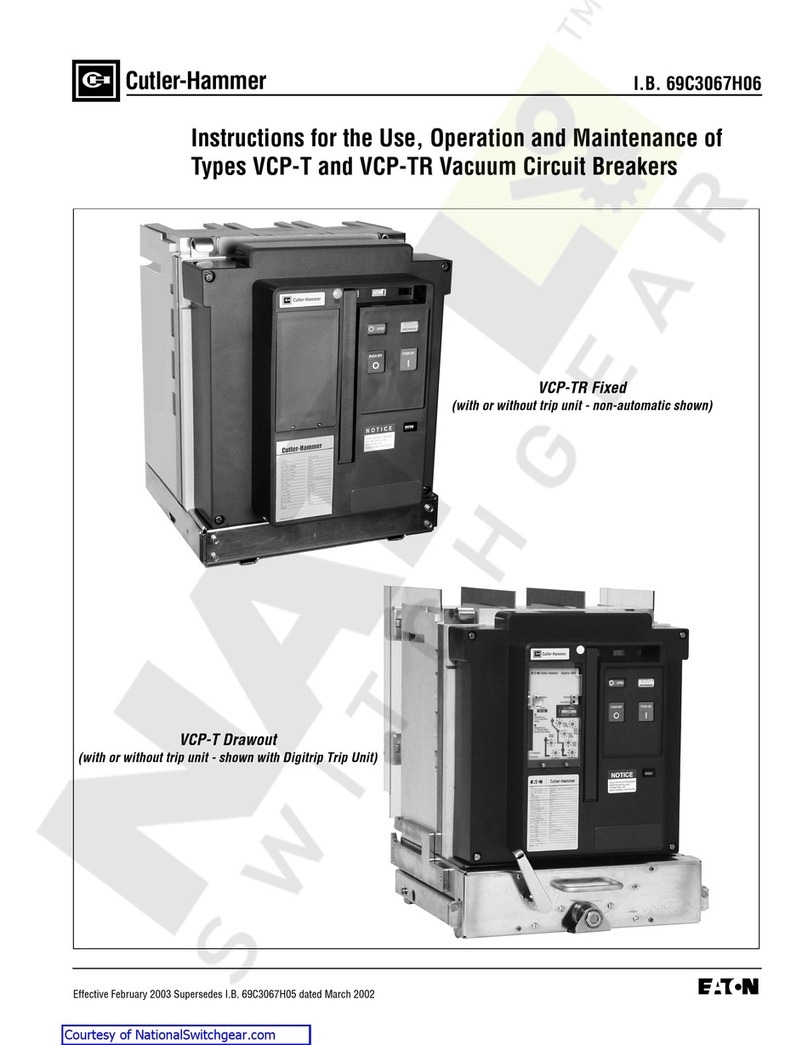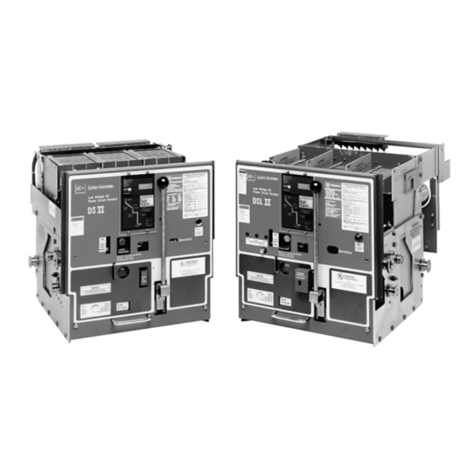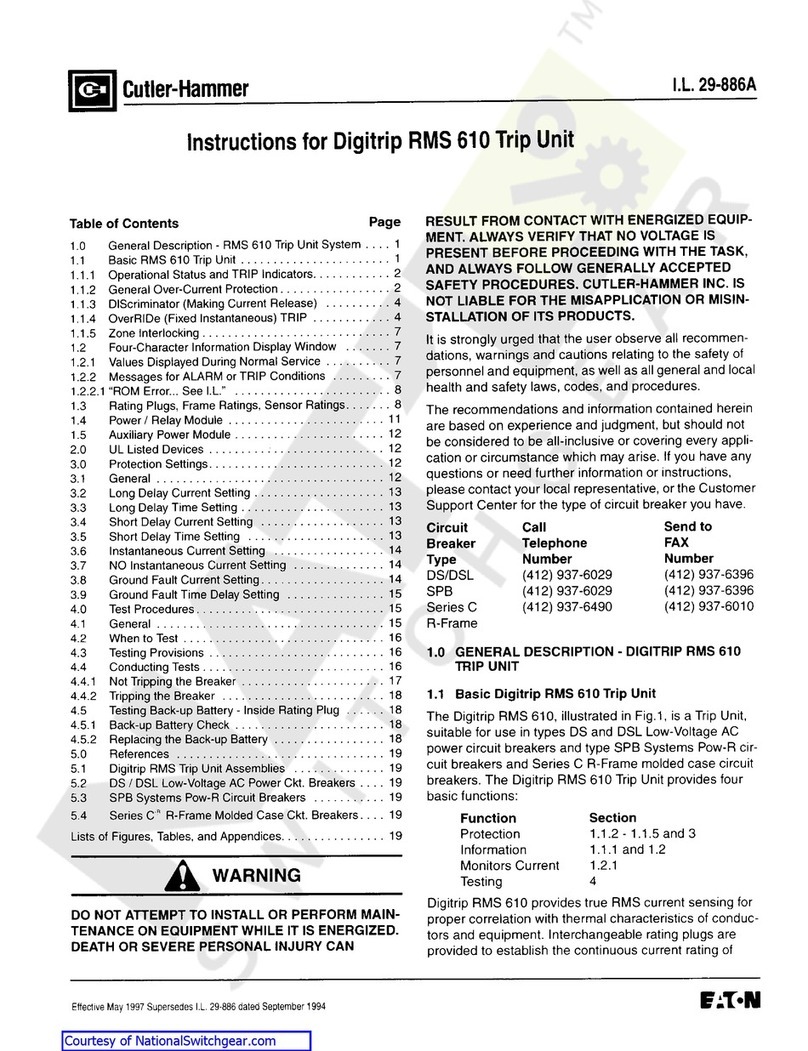
Effective 2/2/2001
Page 1I.L. 70C1037H03
1.0 General Description of Digitrip Trip Units ................. 2
1.1 Protection ............................................................... 4
1.2 Mode of Trip and Status Information ........................ 4
1.3 Installation and Removal .......................................... 4
1.3.1 Installation of the Trip Unit ............................ 4
1.3.2 Rating Plug Installation ................................ 4
1.3.3 Trip Unit/Rating Plug Removal ...................... 5
1.4 Wiring ..................................................................... 6
1.5 Plexiglass Cover ..................................................... 6
1.6 Ground Alarm/Power Supply Module
(520M & 520MC Models only) ................................. 6
1.6.1 Auxiliary Power ............................................ 6
1.6.2 Ground Alarm .............................................. 6
1.6.3 Ground Fault Trip ......................................... 6
1.6.4 Ground Fault Alarm ...................................... 6
1.7 Display Feature (520M family only) ......................... 7
1.8 Standards ............................................................... 7
2.0 General Description of
Magnum Circuit Breakers ........................................ 7
2.1 General ................................................................... 7
2.2 Low Energy Trip Actuator ........................................ 8
2.3 Ground Fault Protection .......................................... 8
2.3.1 General ........................................................ 9
2.3.2 Residual Sensing ......................................... 9
2.3.3 Source Ground Sensing ............................... 9
2.3.4 Zero Sequence Sensing ............................... 9
2.3.5 Multiple Source/Multiple Ground .................. 9
2.3.6 Ground Fault Settings .................................. 9
2.4 Current Sensors (Magnum Frames less than
or equal to 3200A) ................................................. 10
2.5 Current Sensors (Magnum Frames greater
than 3200A) .......................................................... 10
3.0 Principles of Operation .......................................... 10
3.1 General ................................................................. 10
3.2 Trip and Operation Indicators ................................. 15
3.3 Making Current Release ........................................ 15
3.4 Zone Interlocking (520 family only) ........................ 15
4.0 Protection Settings ............................................... 20
4.1 General ................................................................. 20
4.2 Long Delay Current Setting ................................... 20
4.3 Long Delay Time Setting ....................................... 20
4.4 Short Delay Current Setting................................... 21
4.5 Short Delay Time Setting ...................................... 21
4.6 Instantaneous Current Setting ............................... 21
4.7 Ground Fault Current Setting ................................. 22
4.8 Ground Fault Time Delay Setting .......................... 22
4.9 INCOM Communications (520MC model only) ....... 22
4.9.1 Breaker Interface Module (BIM) .................. 22
4.9.2 Remote Master Computer .......................... 23
4.9.3 INCOM Network Interconnections ............... 23
5.0 Test Procedures .................................................... 24
5.1 General ................................................................. 24
5.2 When to Test ........................................................ 24
5.3 Functional Field Testing ........................................ 24
5.3.1 Field Test Kit ............................................... 24
5.3.2 Handheld Functional Test Kit ...................... 25
5.3.2.1 Description of Handheld Test Kit ...... 25
5.3.2.2 Test Procedure ................................ 25
5.3.2.3 Currents .......................................... 25
5.3.2.4 Batteries ......................................... 25
5.4 Performance Testing for Ground Fault
Trip Units - Primary Injection ................................. 25
5.4.1 Code Requirements ................................... 25
5.4.2 Standards Requirements ............................ 25
5.4.3 General Test Instructions ........................... 25
6.0 Battery ................................................................. 26
6.1 General ................................................................. 26
6.2 Battery Check ....................................................... 26
6.3 Battery Installation and Removal ........................... 27
7.0 Frame Ratings
(Sensor Ratings and Rating Plugs) ................. 10, 27
8.0 Record Keeping .................................................... 28
9.0 References ............................................................ 28
9.1 Magnum and Magnum DS Circuit Breakers ........... 28
9.2 Time-Current Curves .............................................. 28
Appendix A Zone Interlocking Examples ....................... 32
Appendix B Troubleshooting Guide ................................ 34
Appendix C Typical Breaker Master
Connection Diagram .............................................. 36
WARNING
DO NOT ATTEMPT TO INSTALL OR PERFORM
MAINTENANCE ON EQUIPMENT WHILE IT IS
ENERGIZED. DEATH OR SEVERE PERSONAL INJURY
CAN RESULT FROM CONTACT WITH ENERGIZED
EQUIPMENT. ALWAYS VERIFY THAT NO VOLTAGE IS
PRESENT BEFORE PROCEEDING. ALWAYS FOLLOW
SAFETY PROCEDURES. CUTLER-HAMMER IS NOT
LIABLE FOR THE MISAPPLICATION OR
MISINSTALLATION OF ITS PRODUCTS.
WARNING
OBSERVE ALL RECOMMENDATIONS, NOTES, CAU-
TIONS, AND WARNINGS RELATING TO THE SAFETY
OF PERSONNEL AND EQUIPMENT. OBSERVE AND
COMPLY WITH ALL GENERAL AND LOCAL HEALTH
AND SAFETY LAWS, CODES, AND PROCEDURES.
I.L. 70C1037H03
Instructions for Digitrip Models 220, 520, 520i, 520M,
520Mi, 520MC and 520MCiTrip Units for use only in
Cutler-Hammer Magnum and Magnum DS Circuit Breakers
Table of Contents
G
*
Cutler
-
Hammer
F
;
T
*
N
Courtesy of NationalSwitchgear.com
